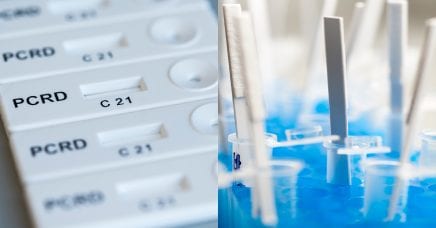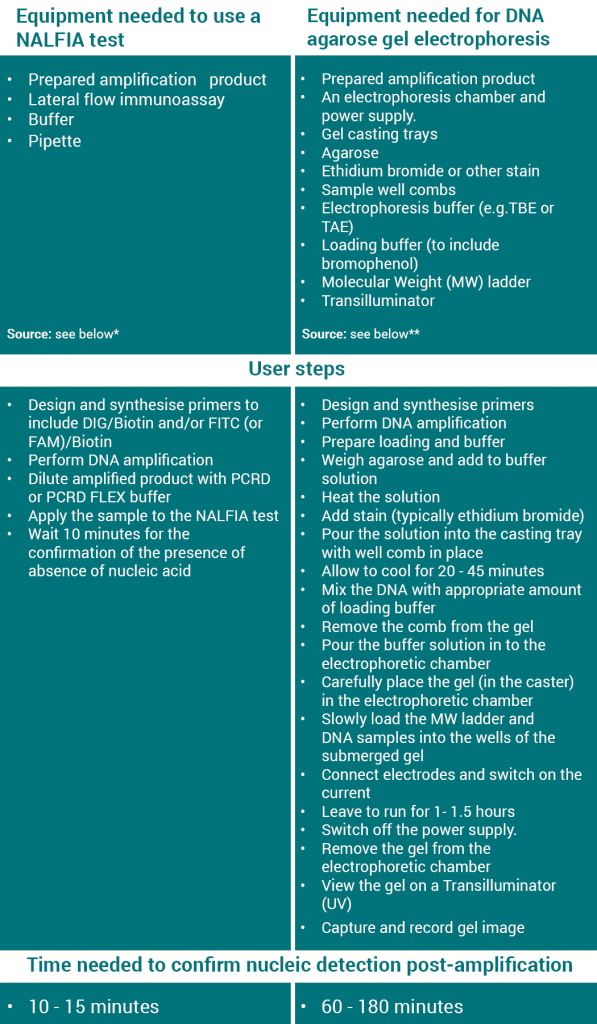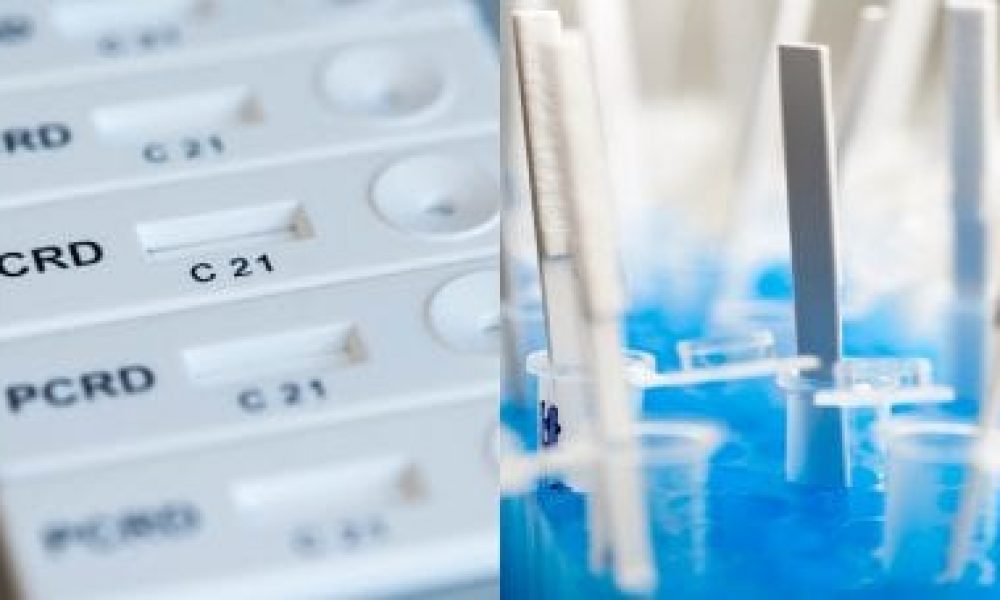Sustainability is a buzz word in modern society and there is a good reason for it. In many industries and sectors, there is a need to focus activities on cost-effectively maintaining efficiencies in order to ensure the longevity of businesses, especially as margins are being squeezed. This is no different for the world of diagnostics.
In this article, we look at where nucleic acid lateral flow immunoassays (NALFIA) can have a positive impact on diagnostic departments’ budgets and assist high workloads in order to produce efficient results in a timely fashion.
A break from the norm

Some sections of the science world could be accused of not wanting to look at new technologies; they stick to what they know because “we have always done it that way”. However, some people may argue there are bureaucratic barriers hindering the uptake of new technologies. Either way, this could be viewed negatively and be seen as almost moving forward blindly without a thought for business longevity or considering if costs can be saved without compromising quality and efficiency.
Some laboratories rely solely on gel electrophoresis for the confirmation of specific amplicons. Of course, there are pros and cons for doing so but the equipment takes time to set-up and use. Also, in some scenarios small or busy labs could use the space required for operating gels and replace with the smaller lateral flow immunoassays.
To illustrate the points above, let’s compare the equipment and methods used to detect nucleic acid via lateral flow immunoassays and agarose gel electrophoresis.

*https://www.pocketdiagnostic.com/wp-content/uploads/2018/02/IFU-PCRD-Nucleic-Acid-Detector-Assay-v5.00.pdf **https://www.addgene.org/protocols/gel-electrophoresis/
When comparing the equipment required, the user-steps and the time needed to perform nucleic acid detection between the two methods, it is immediately obvious where cost and time savings can be made. Even if pre-cast gels were to be used (which would incur an additional cost) using lateral flow assays would still offer considerable time savings.
For laboratories looking to introduce nucleic acid detection to the laboratory, it is important to recognise there are greater equipment and training requirements when performing agarose gel electrophoresis in comparison to using lateral flow assays. Operators need to know how to use the different equipment associated with electrophoresis and there is a level of understanding and skill required to ensure appropriate buffers, % agarose gels and voltage are used, the gels are poured correctly and samples are loaded carefully without loss.
Read more: Why NALFIA tests should be used by every testing lab
A healthier option
Another important consideration, which is also linked to sustainability, is safety. Will continual use of equipment over a period of time be detrimental to the health of employees?
One risk associated with using DNA agarose gel electrophoresis is the potential exposure to UV light, and ethidium bromide, which suspected to cause carcinogenic or teratogenic effects. Although many labs will have protocols in place to protect the health of their employees, the risks are still possible.
Sustainability for nucleic acid detection
There are significant end-user and economic benefits when introducing rapid tests into routine diagnosis. In fact, Abingdon Health’s sole focus is centred on aiding different industries in being able to provide efficient diagnostic results quickly.
The global Rapid Diagnostic Kits market is expected to reach US$28.9 billion by 2023 (Source: ResearchAndMarkets.com), and NALFIA tests are part of this. The expected growth is because of improvements in the technology available, but also as a result of the affordability and time-saving benefits for both end-users and recipients of results. Mixed with this is the fact that the global population is growing, which brings with it a greater demand on diagnostic services: this is where accurate and rapid methods serve a significant purpose.
So when talking about sustainability for nucleic acid detection, there is a requirement to think about where the functionality of NALFIA tests is going to save money without compromising efficiency. Can laboratories continue to use budget-draining and labour-intensive equipment when there is a rapid alternative for confirming the presence of specific amplicons?
PCRD and PCRD FLEX NALFIA tests
Download our PCRD and PCRD FLEX brochure to learn about the NALFIA tests available from Abingdon Health. Orders can be placed online or by emailing info@abingdonhealth. com or calling +44 (0) 1904 406050.

